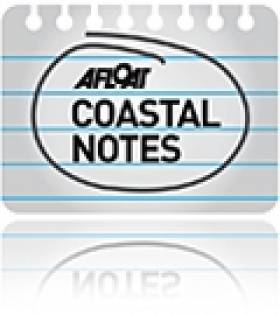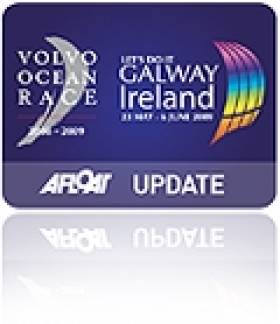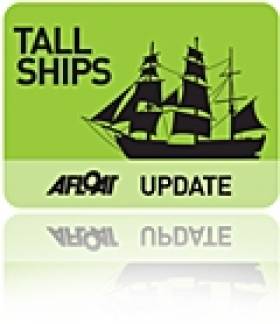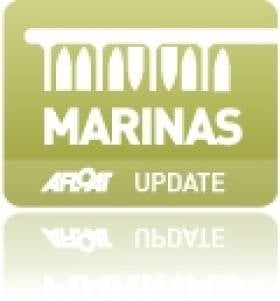Displaying items by tag: visitors
#COASTAL NOTES - Northern Ireland's only aquarium could be privatised, according to the News Letter.
Ards Borough Council is reportedly considering its options for the future of Exploris, the aquarium and seal sanctuary in Portaferry that celebrates its 25th anniversary this year.
Plans were made four years ago to transfer ownership to English aquarium group Blue Reef Leisure, but the deal fell through when that firm was aquired by Spain's Aspro.
Now the council has announced it is calling for proposals for private investment in the Exploris facility - which costs around £500,000 (€600,000) a year to run - following "renewed interest from the public sector".
The move aims to "establish a clear direction for the future of Exploris", which houses one of Northern Ireland's top 10 visitor attractions in its popular seal sanctuary.
The News Letter has more on the story HERE.
Volvo Ocean Race in Galway Will See Irish Food in Focus
#VOLVO OCEAN RACE - Top chef Maurice Keller was in Abu Dhabi last week to fly the flag for Irish food at the third stopover of the Volvo Ocean Race, Waterford Today reports.
Keller spent a few days away from Waterford's Arlington Lodge to join members of Good Food Ireland, Tourism Ireland and Irish embassy staff for a special 'Ireland Day' at the VOR Village.
The initiative was designed to promote Ireland as a prime tourist destination ahead of this summer's Volvo Ocean Race visit to Galway.
And food will play a major role in efforts to attract visitors to the finish line in Galway this July, according to the Limerick Post.
Foodies from across the mid-west will converge at a 'Foodie Forum' at the Galway-Mayo Institute of Technology on 2 Feburary, where plans to showcase Irish food in the city will be top of the agenda.
“At the launch of the countdown to the Volvo Ocean Race, the Let's Do It Galway team announced the four main pillars of the race next summer – marine, green, innovation and food," said Cáit Noone, head of the Hotel School at GMIT.
"The food pillar will provide Ireland with a global showcase opportunity to share with the world our food experiences and the outstanding locally sourced produce we have to offer.”
Jeanie Johnston Visitor Numbers Disappointing But Improving
#TALL SHIPS - Just 17,500 people have visited the replica famine ship Jeanie Johnston since it opened for tours in July 2010, the Sunday Business Post reports.
The disappointing number is around a quarter of those who embarked on Dublin's Viking Splash Tours in 2010.
However, Fáilte Ireland says preliminary figures for 2011 show a 50 per cent rise in visitor numbers at the tall ship over last year, with an average of 1,250 per month compared to 833 monthly in 2010.
The Jeanie Johnston, which is moored off Custom House Quay in the city centre, was purchased by the Dublin Docklands Development Authoruty for €27m in 2005.
Italian Marinas Facing a Tough 2011
In a bad omen for marinas in Ireland and elsewhere in Europe, Italian marina operators are facing a further decline in fortunes, according to boat industry website IBI Plus.
The site highlights a report in Italian newspaper Il Sole 24 Ore which says visitor numbers are falling as boatowners have fled to France, Corsica and Croatia - a result of growing unease with increased checks by the Italian financial police.
More and more berthed boats are up for sale, especially in the 10-20m range, while fuel sales are also dwindling, the report adds.
President of Italian marina association Assomarinas Roberto Perocchio told Il Sole 24 Ore that in some cases up to 20% of berthed boats are on the market, while 10% of clients have left the market.
Marina operators reported a decrease in visits on 2010, with some accusing Italy's Guardia di Finanza of being too heavy-handed.
IBI Plus has more on the story HERE.
Tall Ships Will Sail to Dublin in 2012
It's official - the Tall Ships Races will be coming to Dublin in August next year!
As the Evening Herald reports, the successful four-day festival in Waterford this past weekend will be repeated in the capital from 23-26 August 2012, with up to 100 tall ships expected to sail up the mouth of the Liffey.
As keen readers of afloat.ie will already know, news of the Dublin event was published here back in March.
The event is hoped to attract more than a million visitors to the city, topping the 500,000 spectators who thronged Waterford from last Thursday to Sunday.
Young sailing trainees from Dublin will also have the opportunity of a lifetime to work on board the vessels.




























































